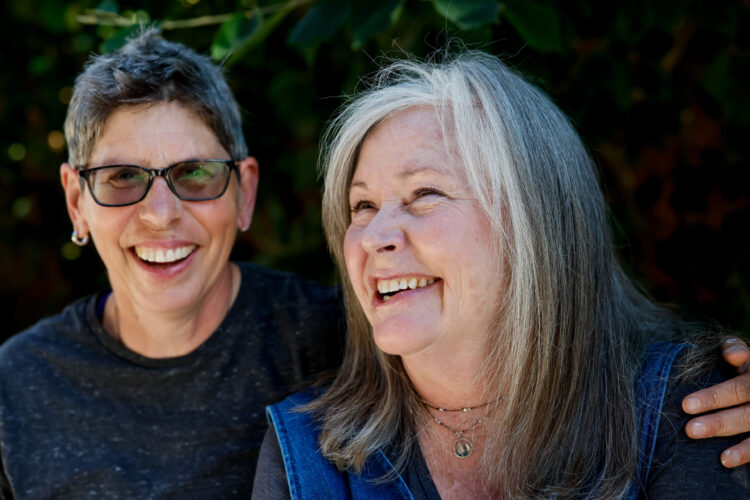Seattle Times intern Xavier Martinez grew up mountain biking on the eastern slopes of Washington’s Cascades mountain range and remembers being “terrified” of encountering a cougar. Though he knew cougar attacks were rare, he rode with an awareness of the risk.
And so, when news broke about a mountain biker who was attacked in the Cascades last February, Martinez was drawn to the story. Local and national outlets recounted the traumatic incident, in which cyclist Keri Bergere was bitten by a cougar while biking with four of her friends. As the cougar sank its teeth into Bergere’s jaw, her friends took action. They pinned the animal down with a bicycle, pulled on its legs and hammered its head with a rock until it released its grip, then kept it pinned under the bicycle until wildlife officials arrived and killed the animal. All five cyclists survived, but Bergere sustained serious injuries.

This was the story that one media outlet after another told in the immediate aftermath of the attack. As the weeks passed, media coverage faded, but Martinez couldn’t let it go. A question nagged at him: How were the women recovering from this trauma?
“I had a hunch that there were some long-term repercussions,” Martinez told me. “It’s not like something like this just happens and then you just move on from it.”
He followed that hunch to a story, published earlier this month in The Seattle Times, about the nonlinear and ongoing nature of trauma recovery.
It’s also a good example of a restorative narrative — an approach to nonfiction that explores how people and communities rebuild in the aftermath of trauma. Instead of sensationalizing what’s broken, or suggesting that it’s already been fixed, restorative narratives probe how people move forward amidst the breakage. They reveal meaningful progressions — from illness to wellness, heartbreak to hope, suffering to survival.
No predictive interviews
Wanting to learn more about the five cyclists’ recovery progressions, Martinez started with Bergere. She then introduced him to her four friends; three agreed to be interviewed (the fourth was overseas and unavailable). As Martinez prepared for each conversation, he reminded himself that he wanted to reveal the different ways that individuals experience in the wake of trauma. This would require him to ask questions that he didn’t already have the answers to and to avoid any assumed storyline.
“I tried to stay away from asking questions about what happened that day, because, frankly, the information’s out there, right? We’ve all heard about the attack,” Martinez said. So rather than asking the women broad and predictable questions about their recovery process, he started off with a seemingly simpler question — one focused around a narrower timeframe: “After the attack, what was the rest of that day like?”
That’s how he learned more about the nine-hour surgery that Bergere endured. And how her four friends, in shock and in need of comfort, had gotten together later that night to drink tea and eat bread. The women’s willingness to talk about the rest of that day opened up windows of opportunity for Martinez to ask more sensitive questions, including: “How often do you think about that day?” and “Can you describe some low points in your recovery process?”
Each of the women’s responses to the same traumatic event differed. Bergere, the cyclist who was attacked, has struggled. As Martinez wrote:
After being rushed to Harborview Medical Center with serious injuries, Bergere spent nine hours in surgery. She was in the hospital for five days. Couldn’t eat for months. Couldn’t feel her face. Couldn’t blink her eyes in sync.
Throughout, Bergere has struggled. It’s hard to shake the memories of the attack: The blood running down her throat, the suffocating feeling of her face being pinned down in the dirt by the cougar. Sometimes, she remembers the moment that she was ready to, as she says, “just let go.”
Two of the women began therapy, including Tisch Schmidt-Williams, who had nightmares; at one point, she called a suicide-and-crisis lifeline. She spent less time with her cycling group, was slower to return to riding and may move to be close to family. From the story:
“I have to protect myself and my boundaries because I’m very vulnerable right now,” Schmidt-Williams said. “Everyone’s timeline is a lot different in terms of how they have to heal and what that looks like.”
The women’s stories reminded Martinez that recovery is not one-size-fits-all — a reality he tried to reflect in the story. When writing the piece, Martinez initially struggled to find the right structure. He laid out a few bullet points as a loose outline, then began writing about each woman’s experiences in chronological order. This meant he had to jump around from one woman’s story to another and then back again. Martinez said he felt constrained by the chronology and thought the story was disjointed. He also realized that the story relied too heavily on details about the attack — the very thing he had been trying to avoid all along. Martinez is used to writing stories about news events, but telling a story about the ups and downs of recovery was new for him, and it took longer to get it right.
Martinez knew that if the story he envisioned didn’t work out, he could default to Plan B, writing a short news update about how the women had recently received the Carnegie Medal for civilian heroism. But he also knew there was so much more to the story. With his editor’s help, Martinez discarded his first draft and rewrote the piece entirely, without strict adherence to chronology. Martinez started with Bergere’s experiences and then moved on to each woman, one by one, with transitions and context woven in. The piece flowed better, he said, and was easier to follow.
“For me, as an early career journalist, I think it was a good example of being honest with yourself,” Martinez told me. “Rewriting something doesn’t necessarily mean that it’s a bad story; it just maybe means that something needs to be told in a different way. That was a powerful lesson.”
To end the piece, Martinez resisted the all-too-common crutch of a happy ending. The women didn’t sugarcoat their own stories or pretend their suffering was behind them, and he wanted his story to reflect that truth.
“To all of the women’s credit, they weren’t trying to say that because they had completed the (mountain trail) course again, or because they had gotten on a bike since, or because they weren’t feeling physical pain anymore, that things were ‘all better,’” Martinez said. “We didn’t have to try to tease out this idea of it not ending; we were able to suggest this through their voices.”
No tidy endings
As I interviewed Martinez about his writing process, I thought about how challenging restorative narratives can be to report and write. They take time to unfold, so don’t always have convenient news pegs. They often involve messy and complicated storylines. And they defy tidy endings. But journalists like Martinez argue that they’re worth telling — a value that research reinforces. One study found that restorative narratives elicit positive emotions and prompt readers to want to help those in need — namely the people featured in the narratives and others like them.
Indeed, Martinez’ approach resonated with readers. “I got a few emails saying that they appreciated the follow-up and that we wrote it as a ‘checking in’ feature rather than a straight news piece,” he said. “Many people in the comments and emails mentioned that talking about the long-term impacts helped them realize the importance of being prepared for the wilderness in the first place.”
Martinez, who is now wrapping up his internship at the Seattle Times, said the restorative narrative genre appeals to him as a young reporter looking for different ways to tell stories. He plans to keep it in mind as he moves to New York for his next journalistic challenge.
“I’m excited to tell more stories like this,” he said. “I really think some of the best stories are about things that are ongoing.”
* * *
Mallary Tenore Tarpley teaches at the University of Texas at Austin’s School of Journalism and Media. Previously, she was the director of the nonprofit Images & Voices of Hope, where she helped develop the restorative narrative genre. Her first book, “SLIP: Life in the Middle of Eating Disorder Recovery,” will be published in 2025. She recently launched a newsletter, Write at the Edge, geared toward helping writers hone their craft.



